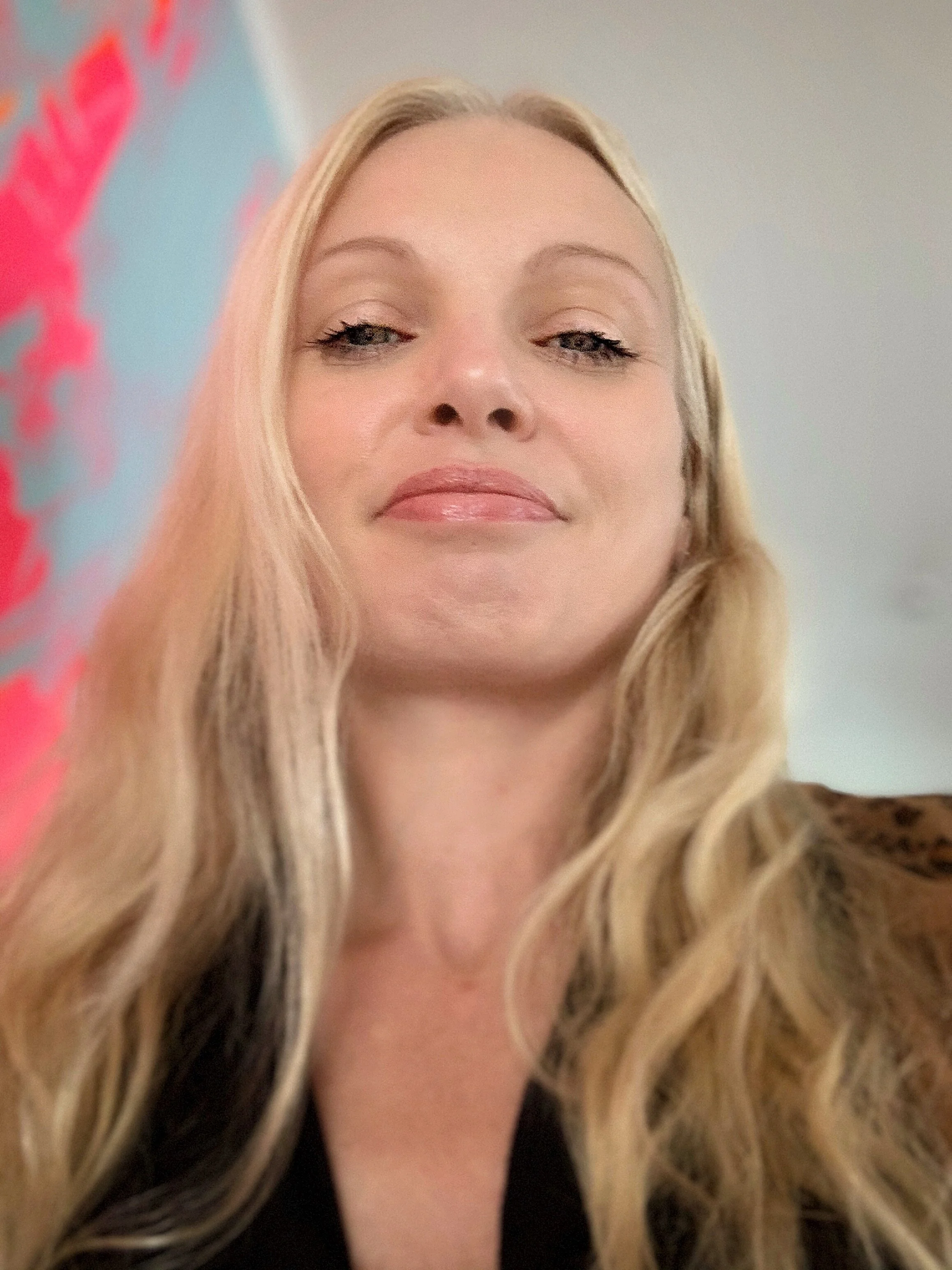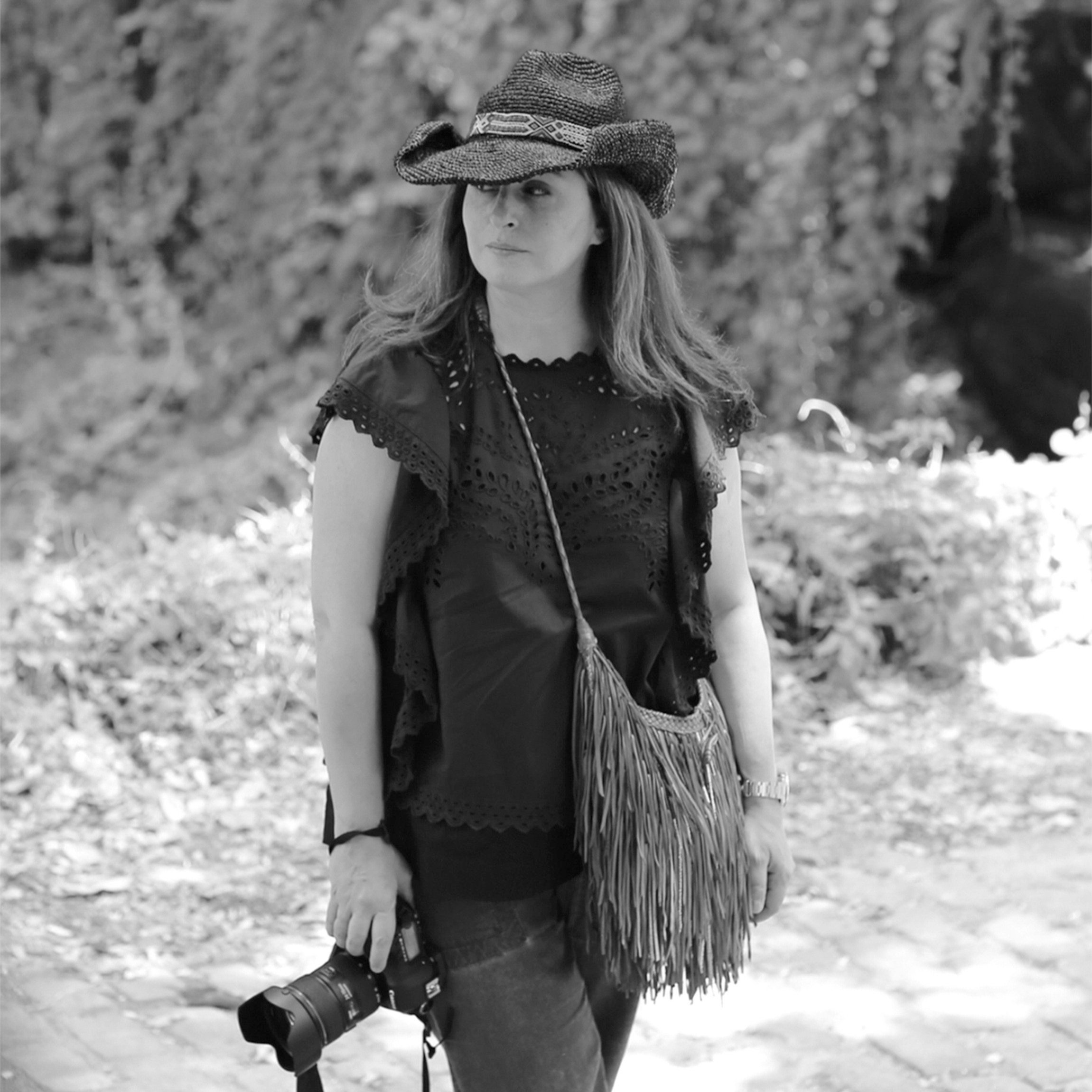In conversation with Kelda Storm
“ Art can never be for everyone as it is very subjective, therefore make art for yourself. ”
- Kelda Storm
Image: Kelda Storm
Creating artwork that uses a strong colour palette, brash with neon and cultural references, Kelda's practice is a mixture of pop and politics. Her work explores both the male and female gaze to create a visual language that considers femininity, representation and autonomy.
Lips, perhaps the ultimate feminine iconography, feature heavily as motifs in her screenprinted work. They serve both to sexualise and sensualise the female form, yet they are also a symbol of speech and voice. Words and images are combined and juxtaposed to create a visual array and serve as a subtle form of protest art.
Kelda's artwork is displayed in sets, like fly-postering, billboard advertising or on an Instagram feed. Visual elements repeat, yet no two pieces in any series are the same. In a digital society that replicates and reproduces, Kelda uses screenprint, a medium known for reproduction, and multiples to create one-off pieces with the medium.
In addition to screenprint, Kelda paints abstract canvases that follow a similar process to her screenprinted work, yet they have no imagery or text. Kelda describes “these artworks act as a voice without words and screenprints without a stencil”. They follow a similar aesthetic in layering and colour.
How did you begin your journey into art?
I have always been into art and creating things. As a child, I would spend my days creating hand-drawn magazines that borrowed heavily from the teen magazines I was reading. I spent my youth drawing and painting and then got into photography. I started off creating fine art self-portraiture that explored representation and gender. I continued this approach throughout my BA. After university, I spent some time as a professional photographer photographing live bands. After a few years of fun and many gigs, I grew tired of the commercial aspect of the photography I was creating, and I learned to screenprint. I had always loved the aesthetic of screenprint, the block-colours, slightly off-set printing and the way the ink sits on the paper rather than being flat like a photograph. I’d never had the opportunity to try it for myself, so I signed up to a three-day course at Bainbridge Studios and the rest, they say, is history!
Image: Kelda Storm, Nothing is Square
How would someone recognise your artwork? Would you say there is some sort of recognisable characteristic?
I think my work has a certain post-digital feel to it and is undeniably female because of the imagery I use. The way I create a series of prints to be displayed as a set, as one larger piece, is quite a defining part of my practice and something I have been developing further over the past couple of years. I use a lot of the same motifs across different series of work, such as lips and the ‘X’. I have a few phrases that reoccur in my artwork such as ‘cheer up love’ and ‘stand there and look pretty’; these feature across screenprint series and have even made it into some of my canvas artwork. The fluorescent colours I use are a recognisable characteristic that runs across my screenprint and painting practices, as are drips of paint and scraping colour across paper or canvas. The bright colours draw attention to my artwork, but they can also be hard on the eyes, I like this subtle contradiction of drawing in, yet also pushing back, the viewer! Despite my bold colour palette, another defining feature of my artwork is that it is often quite minimal. It is like I have stripped everything back. This is especially true of my screenprinted Monoprint Series, which is an ongoing collection of two-colour screenprints.
Do any past or current artists inspire you?
I love Cindy Sherman’s Untitled Film Stills, the single images serve to show a story in one image and the photography is beautiful and well-staged. A lot of the artists I admire at the moment are photographers who sit in a similar vein to Sherman, such as Juno Calypso, Molly Soda and Amalia Ulman. I also admire Eva Stenram and her digital re-working of old photographs; this is something I did in with screenprint a few years ago and started to explore again in my practice over lockdown. I use found or reappropriated images frequently in my practice because I often feel exploring popular-culture by using images from source works better than creating copies or parodies.
Which current art world trends are you following?
Camberwell College of Art gave me a wonderful experience in developing my practice, and importantly, learning about current trends and artists. The trend I’ve found that interests me and my practice is this idea of the female gaze. When I looked back at Sherman’s work after discovering the contemporary range of female artists whose work is accredited as having a defiantly female gaze, I noticed that Sherman was doing the same a generation earlier. We now have this term ‘female gaze’ to describe female artists whose work is not a parallel to the male gaze, but rather a female view of autonomy and representation. Unlike the contemporary female photographers I’ve mentioned, I am not using photography (as such) or social media in my practice, but I feel I can attribute the ethos behind the female gaze to my artwork. However, I am using screenprint and painting to explore my themes instead of photography. Screenprint is under-valued in the contemporary art world therefore I am keen to push the medium as fine art, which, of course, it is.
Image: Image: Kelda Storm, Nothing is Square
How do you think the internet has impacted the art industry?
The internet is great for the art industry, it connects people. I think the pandemic has helped highlight how useful, perhaps vital, the internet is for artists and galleries to show, sell and view artwork.
Currently, every artist needs an Instagram account as much as, if not more than, a website to show work. It helps us connect with other artists and see more artwork that we probably would otherwise. I have had a few good collaborations come from Instagram and I am sure there will be many more.
The internet, and digital landscape we live in, has created another platform for artists to use to create work. Look at Ulman’s Excellences and Preferences, this clever project used Instagram to create an art piece that comments on gender representation and social media. Artists use social media as a tool to self-publish and have a voice where they might not otherwise have this exposure. Online offers the possibility to reach people, anywhere in the world more than a traditional gallery space could; in this sense the internet has opened up a whole world for artists. However, it’s a restricted view as it's a photograph of the artwork. It is not the same as experiencing art in real life. Viewing work online loses a lot of detail, such as size, colour and space, which is crucial sometimes to the artwork.
How do you seek out opportunities?
Mostly through artist call outs and through existing contacts. I could be more business-minded about my practice, but for me the business aspect of being an artist doesn’t come naturally like making art does. I like being in the studio creating rather than calling artworld people and trying to make new contacts. I need to learn to be a bit more proactive in the area to get my work shown and seen in more places.
What is the best advice you have ever received?
Don't stop experimenting and doing what you do is probably the best advice I have been given. Art can never be for everyone as it is very subjective, therefore make art for yourself. Often in art school, people want you to explain everything straight away. During my master’s, I was given the advice that you don't always have to have an answer for what you are doing. You are always creating your artwork for a reason, so sometimes it's okay to keep doing it and connect the patterns later. I thought this was a great bit of advice as it's true and doesn't stifle creativity, rather it gives way to experimentation and exploration through practice.
Image: Kelda Storm, London Grads Now, Saatchi Gallery
Can you tell us about any upcoming projects?
Having just shown at the Saatchi Gallery’s London Grads Now, I feel like I have ticked this year's box in showing my artwork in a prestigious gallery. It was a truly wonderful experience in these uncertain times!
Currently, I am spending time creating work that will form part of my next solo show and trying out ideas for a new series of artwork. It’s a funny time to be showing work as we don’t know if public events will be going ahead. The current restrictions make it difficult for people to mix and see art. The uncertainty makes it hard to plan. Having had a few disappointments at the start of the pandemic, I am cautious about booking anything for this year. Now would be the time to explore online options, but I have a battle as my artwork doesn’t always photograph very well. It works so much better in real-life, to see the collections of screenprints as one bigger piece. Online I tend to show these as separate works, so they lose some of their intention, but Instagram is quite a good way to group images so I could explore this more. The neon colours I use lose a lot of their effect when photographed and don't look as bright which I find frustrating. I have been experimenting with using UV light on my work which makes it more interesting to photograph so the colours retain a glow.
I am part of a group show in February 2021 with other artists who use print and fluorescent ink/paint in their artwork. We had a show right at the beginning of lockdown, but it never opened to the public as it was due to open the week lockdown began, so we are going to try again next year! All the artists are making new work for this show, so this will be a focus for me before the end of the year.














